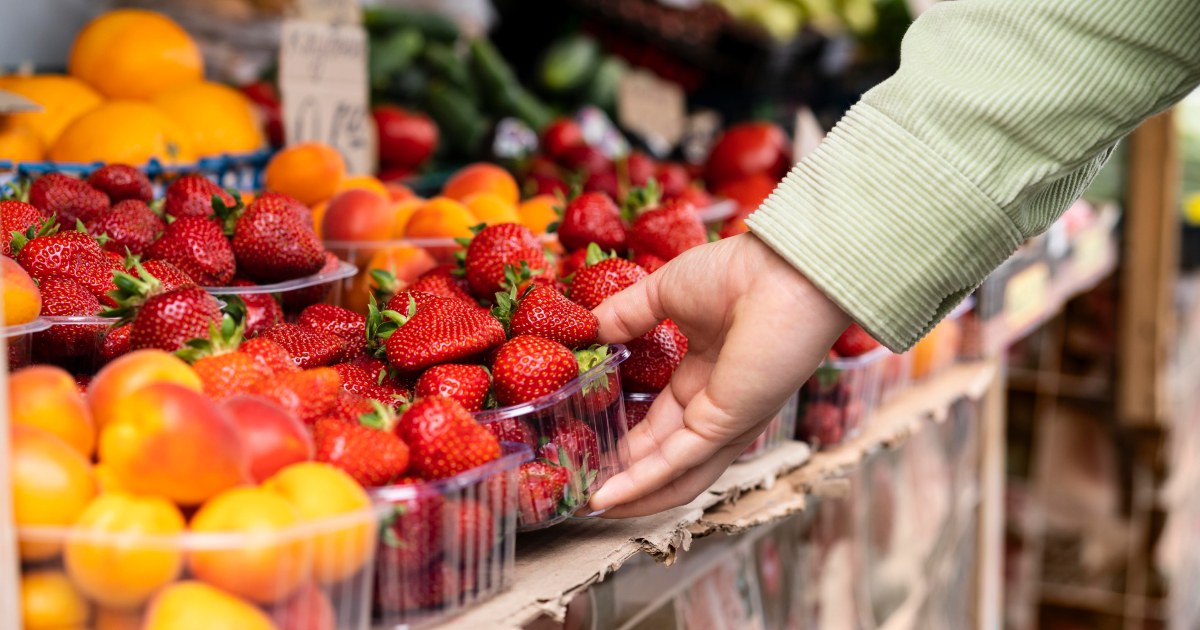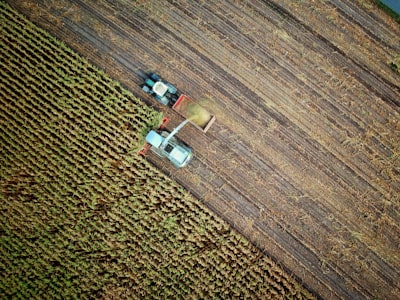
9 challenges of modern agriculture
Modern agriculture has come a long way from traditional farming practices. With advancements in technology and the growing need for sustainable food production, modern agriculture has become more efficient and productive. However, it also faces several challenges that need to be addressed in order to ensure its success. In this article, we will discuss nine challenges that modern agriculture faces and how they can be overcome. We will delve into each challenge, exploring its implications and potential solutions.
1. Limited Resources
One of the biggest challenges in agriculture is the limited availability of resources such as land, water, and energy. As the global population continues to grow, the demand for food increases, putting pressure on these resources. This is further exacerbated by urbanization and industrialization, which often lead to the conversion of agricultural land for other uses.
To overcome this challenge, farmers are turning to innovative techniques such as vertical farming and hydroponics, which allow for more efficient use of limited resources. Vertical farming involves growing crops in stacked layers, thereby maximizing the use of space. Hydroponics, on the other hand, is a method of growing plants without soil, using mineral nutrient solutions in a water solvent. These techniques not only save space and water but also allow for year-round production, independent of weather conditions.
2. Climate Change
Climate change poses a significant threat to nowadays agriculture. Rising temperatures, changing rainfall patterns, and extreme weather events can have a detrimental impact on crop yields. These changes can lead to increased incidences of droughts and floods, which can devastate crops and livestock.
To mitigate the effects of climate change, farmers are adopting practices such as crop rotation, precision agriculture, and the use of drought-resistant crops. Crop rotation involves changing the type of crop grown in a particular field from season to season, which can help improve soil health and reduce pest infestations. Precision agriculture involves the use of technology to monitor and manage crop needs more accurately, thereby improving efficiency and reducing environmental impact. Additionally, investing in climate-resilient infrastructure can help protect crops from extreme weather events.
3. Farm Automation
Farm automation is a double-edged sword for agriculture. While it offers increased efficiency and productivity, it also poses challenges in terms of job displacement and the digital divide. Automation can lead to job losses as machines replace human labor. Moreover, the digital divide, or the gap between those who have access to technology and those who do not, can exacerbate inequalities in the agricultural sector.
To address these challenges, it is important to provide training and support for farmers to adapt to new technologies. This could involve offering workshops, online courses, and other educational resources. Additionally, policies should be put in place to ensure that the benefits of farm automation are distributed equitably. This could involve providing subsidies for small-scale farmers to access technology or implementing policies to protect agricultural workers from job displacement.
Modern agriculture with GrowDirector 3 PRO
Digital farming has emerged as a powerful solution to address the ever-evolving challenges of modern agriculture. GrowDirector‘s modules automate and optimize crop production, controlling irrigation, fertilization, climate, and lighting. They collect data on parameters like soil moisture, nutrients, temperature, humidity, and CO2 levels for crop analysis and improvement. For instance, these modules automate irrigation for consistent watering, fertilization for nutrient balance, climate control for optimal conditions, and lighting for growth optimization.
4. Soil Degradation In Modern Agriculture
Soil degradation is one of the modern agriculture challenges. Intensive farming practices, such as excessive use of chemical fertilizers and pesticides, can lead to soil erosion and nutrient depletion. This not only reduces the productivity of the land but also contributes to environmental pollution.
To combat soil degradation, farmers are adopting sustainable practices such as organic farming, crop rotation, and the use of cover crops. Organic farming involves the use of natural fertilizers and pest control methods, which can help maintain soil health. Cover crops, such as clover or rye, can be planted in between main crop seasons to protect the soil from erosion and improve its fertility. These practices help improve soil health and fertility, ensuring long-term productivity.

Soil degradation is the biggest problem of modern agriculture
According to World Bank figures, in 2016, more than 700 million hectares (1.7 billion acres) were devoted to growing corn, wheat, rice, and other staple cereal grains—nearly half of all cultivated land on the planet.
https://www.nationalgeographic.org/article/environmental-impacts-agricultural-modifications/
5. Water Scarcity
Water scarcity is a pressing issue in modern agriculture, especially in arid regions. Traditional irrigation methods are often inefficient and wasteful, leading to over-extraction of groundwater and depletion of water resources. This not only threatens the sustainability of agriculture but also impacts other water-dependent sectors and ecosystems.
To address this challenge, farmers are turning to precision irrigation techniques, such as drip irrigation and sensor-based irrigation systems. Drip irrigation involves delivering water directly to the root zone of plants, thereby reducing evaporation and runoff. Sensor-based irrigation systems use sensors to monitor soil moisture levels and provide water only when necessary. These techniques help optimize water usage and reduce water wastage, ensuring sustainable water management in agriculture.
6. Pest and Disease Management
Pests and diseases pose a constant threat to modern agriculture. Traditional methods of pest and disease management often rely on the use of chemical pesticides, which can have negative environmental impacts. Overuse of pesticides can lead to the development of pesticide-resistant pests, soil and water pollution, and harm to non-target organisms.
To overcome this challenge, farmers are adopting integrated pest management (IPM) practices, which involve the use of biological controls, crop rotation, and the use of resistant crop varieties. Biological controls involve the use of natural enemies to control pests, such as ladybugs to control aphids. IPM helps reduce reliance on chemical pesticides and promotes sustainable pest and disease management.

7. Urban Agriculture
Urban agriculture is gaining popularity as a means to address food security and promote sustainable food production. However, it faces challenges such as limited space, soil contamination, and zoning regulations. Urban areas often lack the space for traditional farming, and the soil may be contaminated with pollutants.
According to the latest estimates of the 2021 Report on Food Security and Nutrition in the World (SOFI), 811 million people suffered from hunger in 2020.
To overcome these challenges, urban farmers are utilizing digital farming techniques such as vertical farming, rooftop gardening, and hydroponics. These techniques allow for food production in small spaces and can help mitigate soil contamination issues. Additionally, policymakers can play a crucial role in supporting urban agriculture by providing incentives and creating favorable regulations.
8. Access to Markets
Access to markets is a significant challenge for small-scale farmers in modern agriculture. Limited transportation infrastructure, lack of market information, and unfair trade practices can hinder their ability to sell their produce at fair prices. This can lead to income instability and discourage farmers from continuing their farming activities.
To address this challenge, farmers can form cooperatives or join farmers’ markets to collectively market their produce. Cooperatives can provide farmers with bargaining power and shared resources, while farmers’ markets can provide direct access to consumers. Additionally, investing in transportation infrastructure and providing market information can help improve access to markets for small-scale farmers.

9. Consumer Awareness
Consumer awareness plays a crucial role in the success of modern agriculture. Educating consumers about the benefits of sustainable farming practices and the importance of supporting local farmers can help create a demand for sustainably produced food. However, misinformation and lack of transparency can often lead to confusion and mistrust among consumers.
To address this, labeling schemes and certifications can help consumers make informed choices about the food they purchase. These labels can provide information about the farming practices used, the origin of the food, and its nutritional content. By raising consumer awareness, modern agriculture can thrive and contribute to a more sustainable food system.
Conclusion
Modern agriculture faces several challenges, but with innovation and collective efforts, these challenges can be overcome. By adopting sustainable practices, utilizing technology, and creating supportive policies, modern agriculture can ensure food security, protect the environment, and contribute to a more sustainable future. It is crucial for all stakeholders, including farmers, policymakers, and consumers, to work together to address these challenges and build a resilient and sustainable agricultural system. The future of our food system depends on our ability to adapt and innovate in the face of these challenges.
